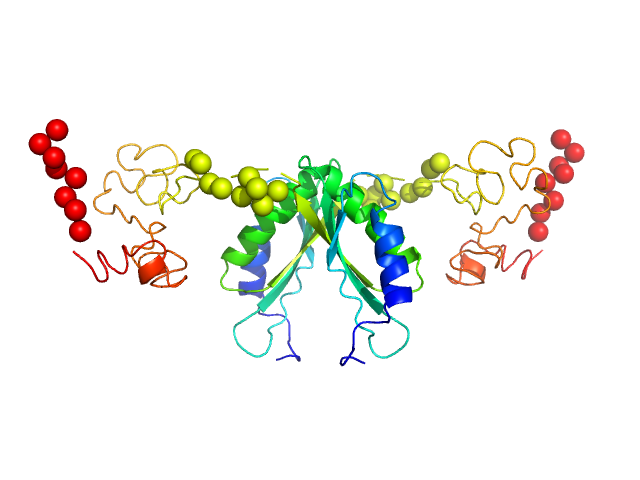|
X-ray synchrotron radiation scattering data from solutions of the soluble C-terminal domain of human zinc transporter-1 (ZnT1) in 20 mM Tris 150mM NaCl, 1mM NaCl, pH 7.6 were collected on the SAXS/WAXS beam line of the Australian Synchrotron (Melbourne, Australia) using a 2D Photon counting Pilatus 2M pixel detector (s = 4π sin θ/λ, where 2θ is the scattering angle). The sample was measured in an in-line SEC-SEXS configuration with sheath flow in the capilary to reduce radiation damage. Thirty successive 1 second frames were collected across the elution peak, where the average protein concentration is estimated to be ~0.2 mg/mL (but the A280 was not measured as the protein eluted). The data were normalized to the intensity of the transmitted beam and radially averaged and the scattering of the solvent-blank was subtracted. The models and corresponding fits include those derived from dummy atom modelling using DAMMIN (top) and rigid-body modelling using CORAL (bottom).
SEC column = UNKNOWN. Sample injection volume = UNKNOWN. Flow rate = UNKNOWN
|
|
 s, nm-1
s, nm-1

